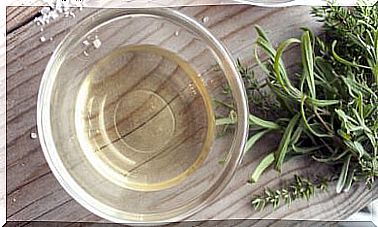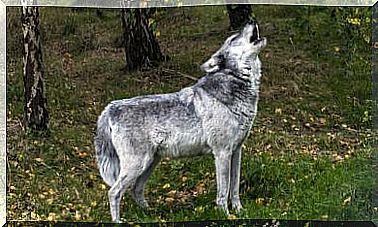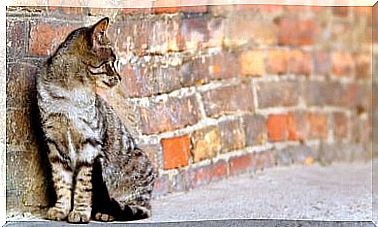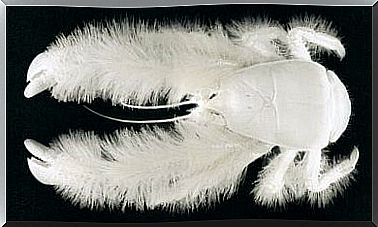Differences Between Water And Land Turtle
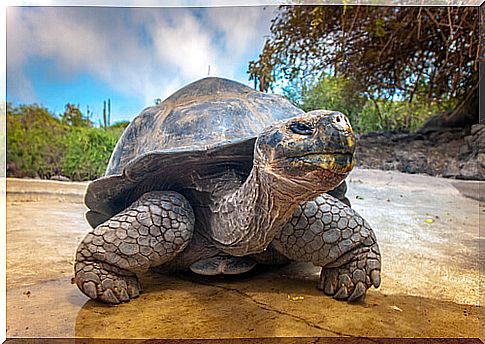
With several characteristics in common, we can also find differences between a water and land turtle. In the following article we will tell you how these animals that are usually chosen as pets differ.
Main differences between water and land turtle
There are many types of chelonians in the world, which are divided into two large groups: water – sweet or salty – and land. The main differences between the two are:
1. Its habitat
Without a doubt, it is the most notable difference between water and land turtles: the place where they live. We can find some terrestrial that inhabit desert areas or remote islands such as the Galapagos, and others that prefer grasslands or irregular fields.
In the case of aquatic ones, it is possible to find them both in fresh waters of lagoons, lakes, rivers and estuaries, as well as in salty waters, in the sea and coastal regions. They all opt for warm or temperate climates.
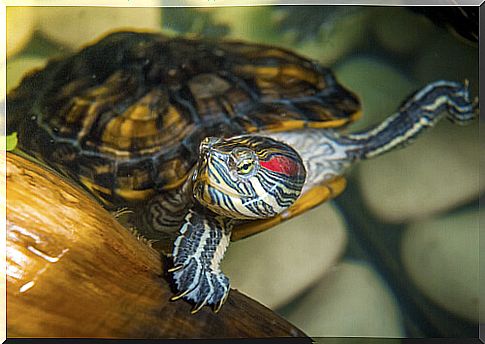
2. His appearance
Land tortoises have a taller shell with thicker, firmer scales. The water ones, on the other hand, present it more ‘flattened’ and smooth, in addition to being more flexible.
In addition, the legs are different : the terrestrial ones have very strong fingers and claws; in marine or aquatic they are more similar to the fins of fish. Thanks to these they can move more easily in the water.
3. Your diet
We could say that it is a very important difference between water and land turtle, especially if you are thinking about choosing one as a pet. None have teeth, but their bite can be very powerful: their mouth ends in a ‘beak’ shape and their jaws are more than strong.
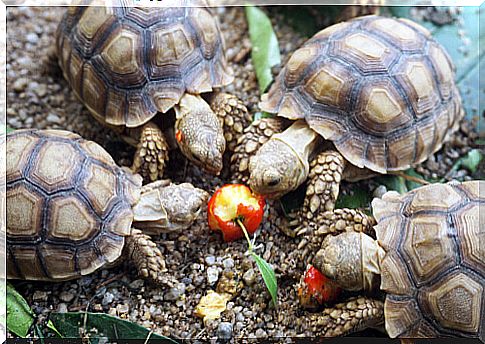
In general terms, the terrestrial ones are herbivorous and the aquatic ones are carnivorous. Of course, there are exceptions depending on where they live and even age, as navies become vegetarian in adulthood.
4. Your life expectancy
Turtles are known to be one of the longest-living animals, but there are even differences between a land turtle and a water turtle. The former can exceed 100 years of age. The record is held by a Madagascar star tortoise, which lived no less than 188 years.
Those of water can reach 20 years if they live in the sea or up to 30 if they are freshwater. That’s for specimens in the wild. Those in captivity can live longer if properly cared for.
5. His character
To determine the character or behavior of a turtle, you have to take into account the area where it lives and if it is used to seeing people or not. It is said that the water ones are calmer because they do not interact with other species.
In the case of the terrestrial ones, they tend to have a stronger temperament; they can become quite aggressive in the mating or nesting season. Of course there are exceptions, but the famous alligator turtle – aquatic – is known to bite whoever bothers it.
6. Your care
When it comes to keeping a pet turtle, there are differences between water turtles and land turtles . To begin with, the former require a large aquarium or fish tank to swim without problems and, in addition, a dry area to sunbathe and regulate their temperature. If it is a carnivorous species we will have to give it insects, worms and even raw meat.
The terrestrial ones can adapt to more environments, even to homes without a garden or outdoors. They hibernate all winter, which is why they need a suitable shelter. It is easier to feed them, since they consume mainly fruits and vegetables like people (lettuce, cabbage, tomato, apple, etc).
If you don’t know what to choose, remember the differences between water and land turtles. And, of course, consult a veterinarian who specializes in exotic pets. Read everything you can about them and offer him what he needs.





